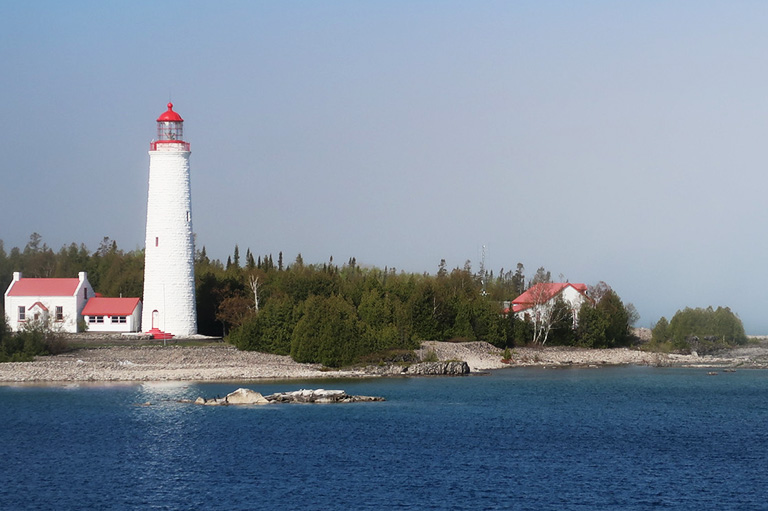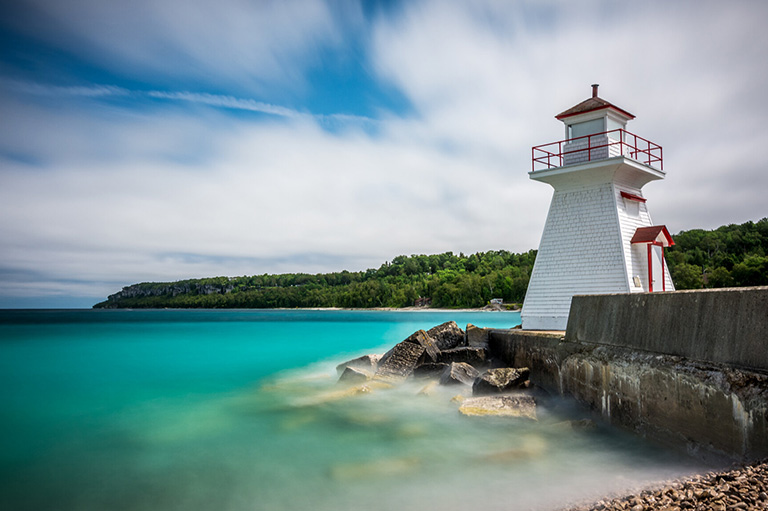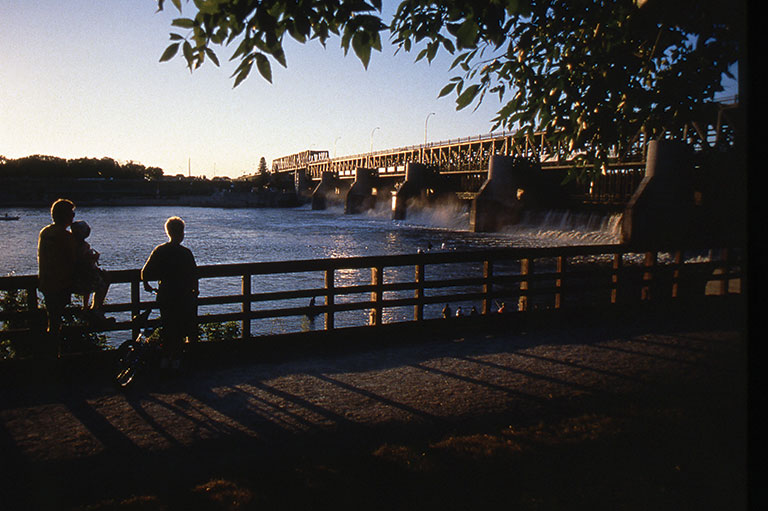Guiding Lights

Two summers ago, lowered Lake Huron levels revealed ribs of a schooner’s hull on Southampton Beach, a five-hour drive northwest of Toronto.
Excavations by marine archeologists exposed a massive-timbered, oakframe, two-mast vessel that was 18 metres long with a 5.4-metre beam. Recovered military artifacts suggest the vessel was active during the War of 1812, though likely shipwrecked a few years later.
Such a wreck was not uncommon in the early days of settlement along the Lake Huron-Georgian Bay shoreline. The hidden reefs, rugged rocks and shifting sandbars made early navigation a mariner’s nightmare.
Westward settlement, expanded Great Lakes trade and the advance of steamship transportation in the mid-19th century forced a change.
In the 1850s, a string of lighthouses was built along Lake Huron’s Bruce Coast, six of them “Imperial” lights, their construction costs supported by Great Britain, their exteriors quarried by Scottish stonemasons and shipped to the colony as ballast.
Today, the Cove Island lighthouse, which still marks safe passage through the perilous strait between Lake Huron and Georgian Bay, remains in top condition with its original Fresnel lens, shipped from Paris and assembled by French technicians.
The other five continue to aid navigation. But for holidaymakers, they and nine other lighthouses along the scenic Bruce Coast remain beacons of beauty, punctuating shorelines with their white columns and bright red roofs, reminiscent of a maritime way of life now largely lost to modern technology.

A tour might begin with Point Clark Lighthouse, a national historic site 35 kilometres north of Goderich. The tower and lighthouse keeper’s cottage are open to visitors seasonally. Like the other Imperial lighthouses, Point Clark was built to last.
At ground level, the elegant dolomite limestone walls are nearly 2 metres thick, tapering to .6 metres at the top where the walls are flared into a projection to give support to a 12-sided glass lantern framed in cast iron.
A bronze lion head at each angle of the eaves directs rainwater away from the domed red roof. Point Clark, like the other Imperial towers, was built by Scottish-born John Brown, who apprenticed as a stonemason in Glasgow and is recognized today as an exceptional craftsman.
Hauling stone and workmen to remote sites, however, proved a logistical nightmare for Brown, and he very nearly went bankrupt. Only six of a planned 11 were built. The cost became prohibitive for a struggling colony.
Drive north along Highway 21 for 20 minutes and you’ll reach Kincardine Lighthouse and Museum, located in the downtown harbour.
This octagonal wooden tower was built in 1881 to service a local salt and fishing industry. Through the lantern-room window, you can see the remains of the Ann Maria, a schooner that sank in 1902, lying just off the south pier.
Town clerk John H. Scougall (1805-1922), whose hobby was photographing activities of town life, was one of the many townspeople who rushed to the pier to capture the sinking. His historic photos are hung in a room named in his memory. Joining the tower is a six-room house.
In the kitchen of the former keeper’s quarters are photographs and pages from diaries of lighthouse keepers over the years. Every evening during the summer a Scottish piper ascends the lighthouse stairs to play his bagpipes at sundown.

After a 40-minute drive north to Southampton, take a 15-minute boat tour from the harbour to visit another of the Imperial lighthouses, delightful Chantry Island Lighthouse, and the lighthouse keeper’s cottage, lovingly restored by volunteers.
The island is a federal sanctuary with over 40,000 birds returning in spring, including 60 varieties of egrets.
Also located in Southampton is the Bruce County Museum with an extensive expansion and restoration added in 2005. In the Marine Gallery is a shipwreck diorama detailing the excavation on Southampton’s beach of the mystery schooner and its many artifacts.
An hour’s drive north of Southampton, tour boats from Tobermory, Georgian Bay, visit Flowerpot Island, an almost two hour boat ride. Take the Loop trail up the island to the lighthouse keeper’s home, to learn more about the many schooners that sank to watery graves in Fathom Five National Marine Park.
On the east side of the tip of the Bruce Peninsula, one of the last lighthouses to be built, Cabot Head (1896), stands lonely and isolated on a limestone cliff 21 kilometres east of Wingfield Basin, an important bird and nature reserve in Georgian Bay.
By the early 1900s, railways and roads had diminished the need for water transportation. The building of new lighthouses ceased. But thanks to their superb construction, many remain as poignant reminders of a golden age of shipping on the Great Lakes.
Themes associated with this article
Advertisement




